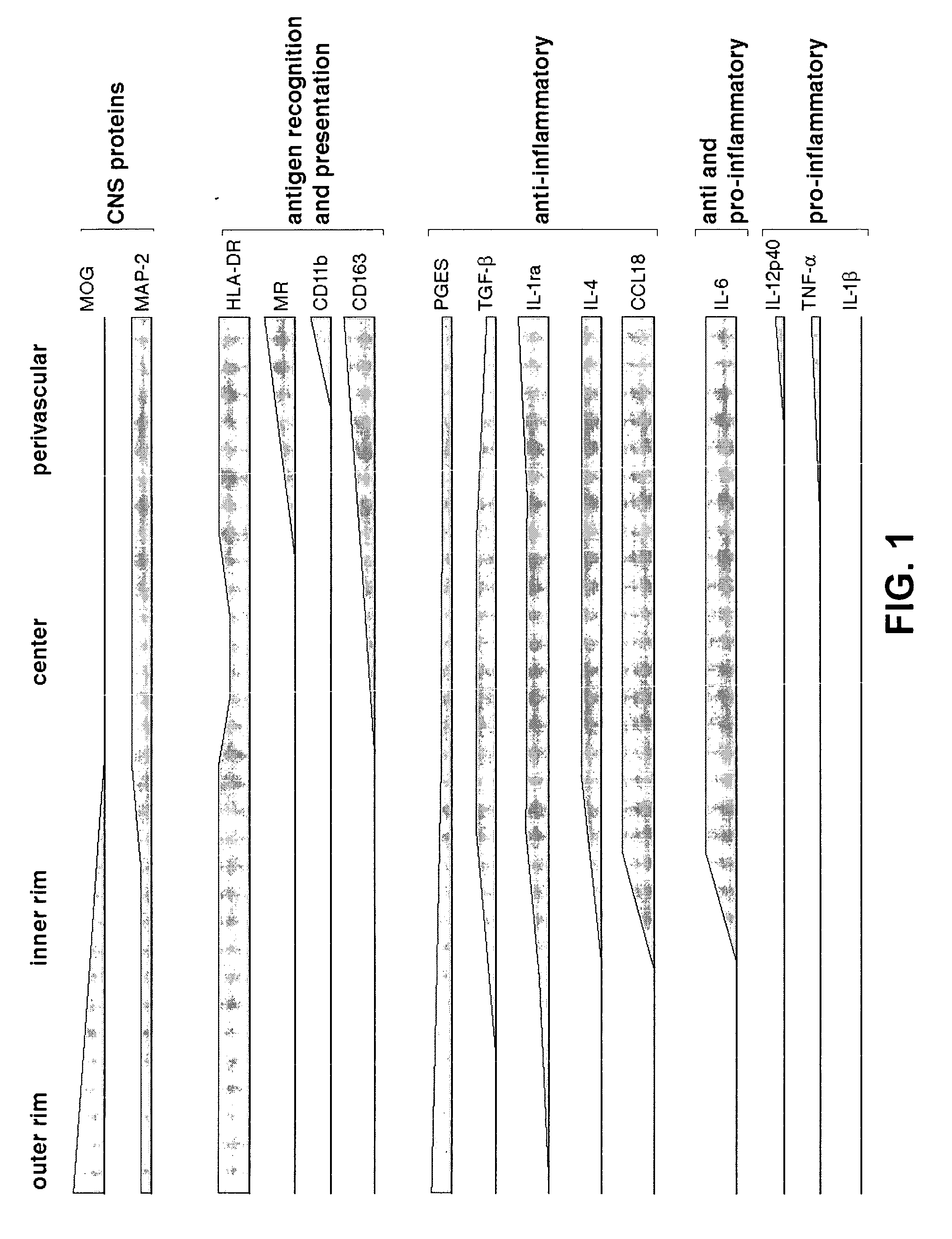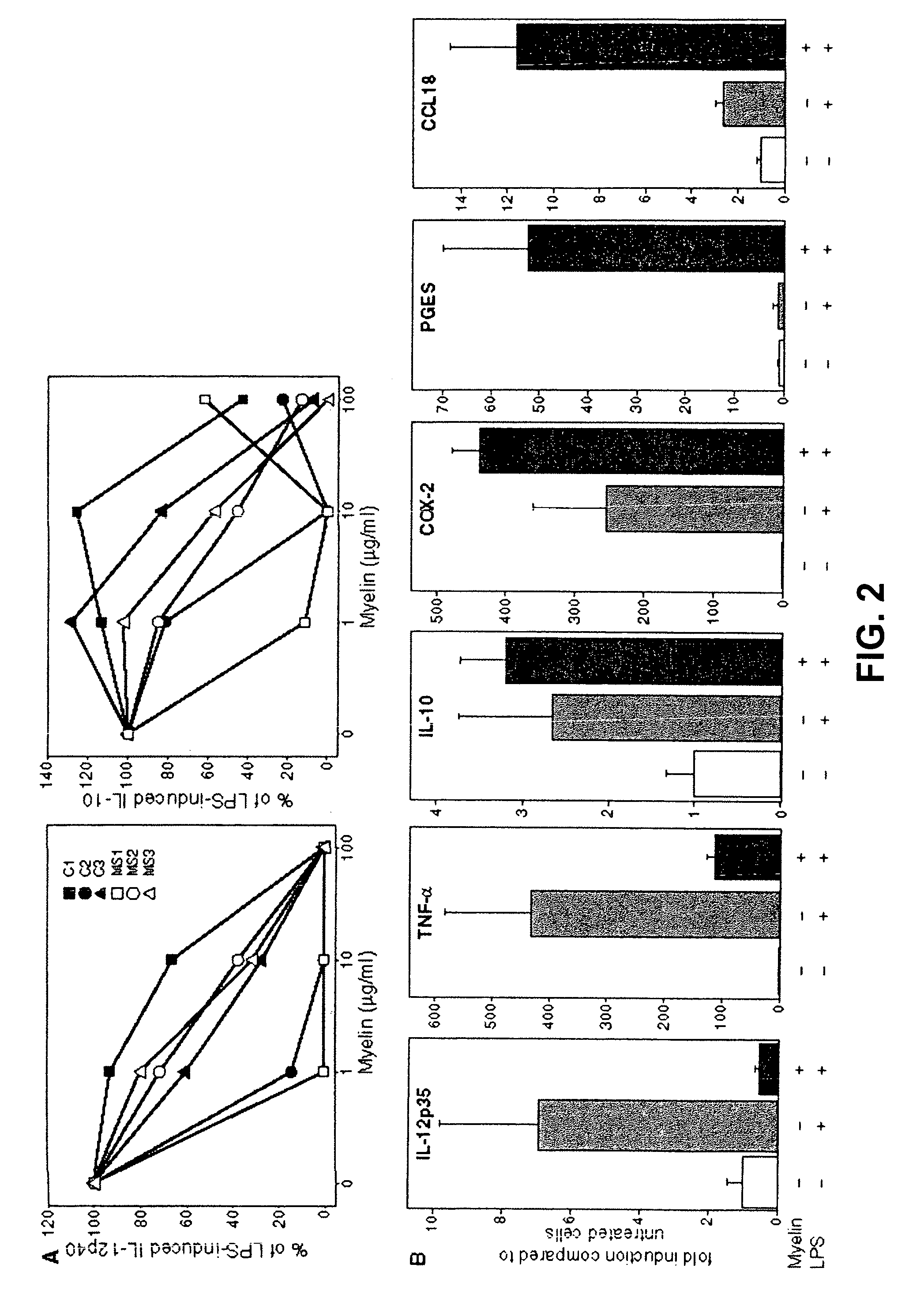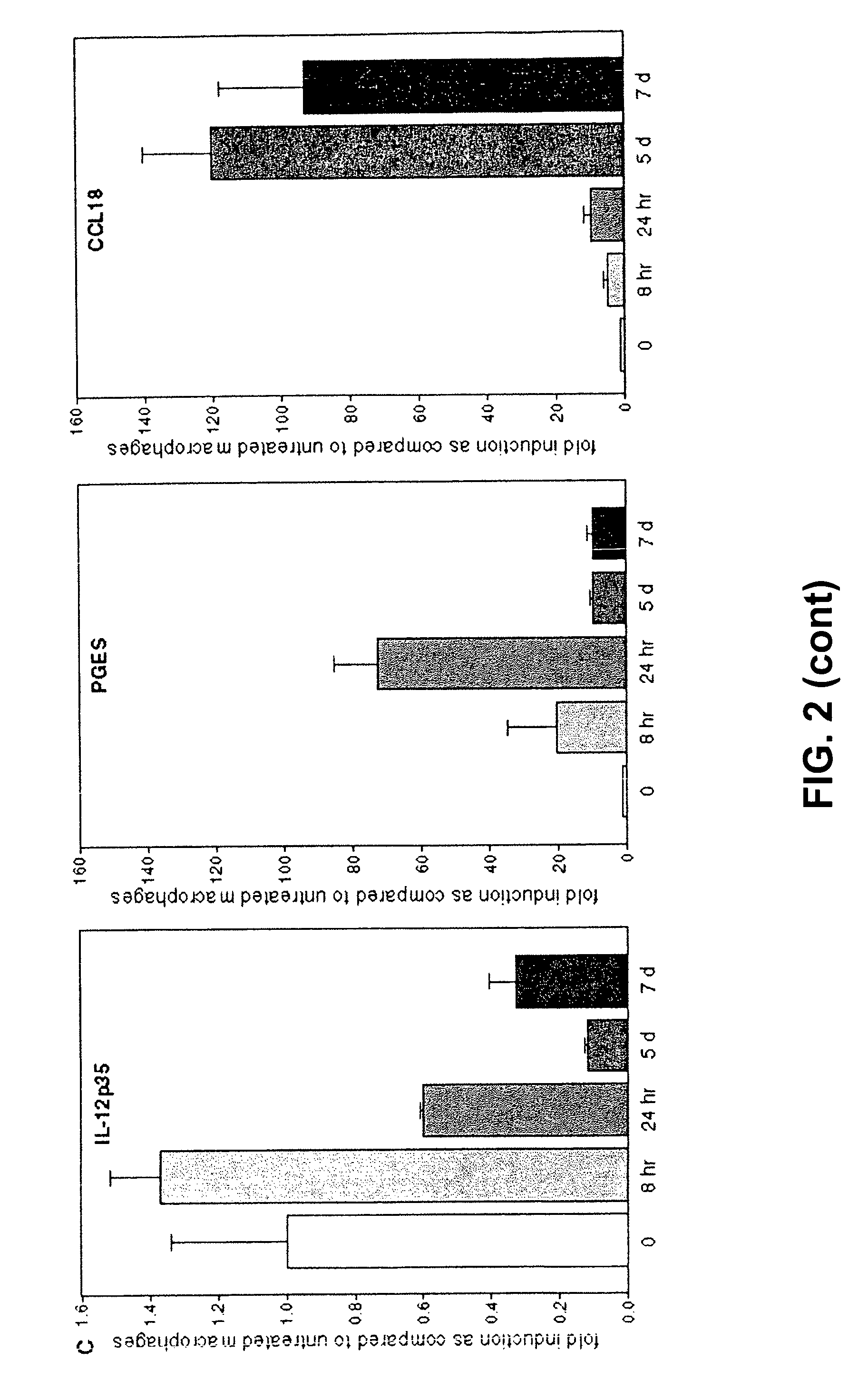Method for in vitro testing of compounds for assessing therapeutic value in the treatment of multiple sclerosis and other diseases wherein foamy cells are involved in the disease etiology
a compound and in vitro technology, applied in the field of multiple sclerosis and experimental models, can solve the problems of not being able to bridge the considerable gap between eae models and ms, not being able to test the efficacy of foamy macrophages, and still not being able to determine if and how foamy macrophages may affect the local inflammatory process, so as to reduce degradation-catabolism, improve the response of patients, and improve the effect of intracellular production
- Summary
- Abstract
- Description
- Claims
- Application Information
AI Technical Summary
Benefits of technology
Problems solved by technology
Method used
Image
Examples
example 1
Results of Example 1
[0034]Multiple sclerosis (MS) lesion activity concurs with the extent of inflammation, demyelination and axonal suffering. Proinflammatory myeloid cells contribute to lesion development, but the self-limiting nature of lesions implies as yet unidentified anti-inflammatory mechanisms. We addressed the hypothesis that myelin ingestion by myeloid cells induces a foamy appearance and confers anti-inflammatory function. We show that myelin-containing foam cells in MS lesions consistently express a series of anti-inflammatory molecules while lacking pro-inflammatory cytokines. Unique location-dependent cytokine and membrane receptor expression profiles imply functional specialization allowing for differential responses to micro-environmental cues. A novel human in vitro model of foamy macrophages functionally confirmed that myelin ingestion induces an anti-inflammatory program. Foamy macrophages are unable to respond to prototypical inflammatory stimuli. Preliminary mi...
example 2
Do Compounds Modulate Immune Responses by Macrophages and Foam Cells?
Experimental Design:
[0048]Human monocyte-derived macrophages were cultured in medium (=macrophages) or in the presence of human brain-derived myelin for 48 hours (=foam cells).
[0049]Macrophages and foam cells were cultured in the presence of 10 microg / ml compounds BTMP1, BTMP2, BTMP3, BTMP4, BTMP5, BTMP6, BTMP7, BTMP8, BTMP9, BTMP10 for three hours. Compounds were tested under cover by order of Biotempt BV, Hoge Linthorst 1, 7958 NZ, The Netherlands.
[0050]10 ng / ml LPS was added to the cultures for an additional 16 hours.
[0051]Supernatants were collected and ELISA performed for TNF-alpha, IL-12p40, and IL-10.
Results:
[0052]Protein levels are depicted in Table 2.
[0053]LPS-induced TNF-alpha, IL-12p40 and IL-10 in macrophages as expected, confirming the experimental system performed as usual.
[0054]Foam cells demonstrated decreased LPS responses for IL-10 and IL-12p40 as expected. LPS-induced TNF-alpha production by foam...
example 3
Do Compounds Affect Cytokine Production by Human Macrophages and Foam Cells?
Experimental Design:
[0057]Human monocyte-derived macrophages from a healthy blood bank donor were cultured in medium (=macrophages) or in the presence of human brain-derived myelin for 48 hours (=foam cells).
[0058]Macrophages and foam cells were cultured in duplicate in the presence of 10 microg / ml of compounds BTMP1, BTMP2, BTMP3, BTMP2, BTMP5, BTMP6, BTMP7, BTMP8, BTMP9, BTMP10 for two or eight hours, or cultured in macrophage medium with vehicle.
[0059]Cells were lysed and real time RT-PCR (TaqMan technology) was performed on all samples for GAPDH (housekeeping gene), TNF-alpha (pro-inflammatory), IL-12p35 (pro-inflammatory), IL-10 (anti-inflammatory), CCL18 (chemokine), COX-2 (prostaglandin pathway).
Results:
[0060]Effects of compounds on mRNA expression levels are depicted in Tables 2, 3 and 4.
[0061]The compounds did not affect macrophage or foam cell morphology or viability as judged by microscopic examin...
PUM
| Property | Measurement | Unit |
|---|---|---|
| time | aaaaa | aaaaa |
| time | aaaaa | aaaaa |
| time | aaaaa | aaaaa |
Abstract
Description
Claims
Application Information
 Login to View More
Login to View More - R&D
- Intellectual Property
- Life Sciences
- Materials
- Tech Scout
- Unparalleled Data Quality
- Higher Quality Content
- 60% Fewer Hallucinations
Browse by: Latest US Patents, China's latest patents, Technical Efficacy Thesaurus, Application Domain, Technology Topic, Popular Technical Reports.
© 2025 PatSnap. All rights reserved.Legal|Privacy policy|Modern Slavery Act Transparency Statement|Sitemap|About US| Contact US: help@patsnap.com



